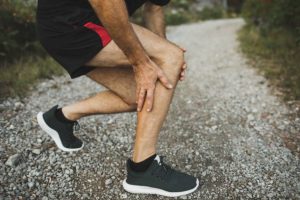Quick Navigation
Overview
You feel pains when you walk/run…read this guide now!!!
Walking and running are some of the easiest forms of locomotive exercise you could ever do. However, they could as well become the most dreadful thing you do. You might start to feel some pains around your calves when you don’t have enough movement in your ankles to walk, run, and do some other form of locomotion. It becomes more painful when walking or standing for a longer duration on hard surfaces like a concrete floor. This often leads to a medical condition called Achilles Tendinitis. This happens when Achilles’s tendon, which connects the back of your leg to your heel, is swollen and sore at the bottom of your foot. This leads to heel pain and tendinitis. This article will shed some light on this problem, and we hope you will have a better understanding after reading through it. Enjoy!
Why do my Calf Muscles Tighten up?
When calf muscles get all tight up, many reasons could cause that. However, there seems to be a constant factor in all; this is the signal coming into your body. This signal is being responded to by the body, making you feel your calf muscles tightening. These signals could be in the form of external signals or internal signals.
Internal signals are those inside the body that influence how tight your calf muscles feel. An example of this type of signal is your nervous system. Your nervous system, which includes your brain, spinal cord, and nerves, decides how much mobility you get to have. When you do anything greater than that mobility, your calf muscles tighten due to the nervous system. When you start to run, you might find it so uncomfortable to walk in between runs. Your calf muscles feel too short and hence so tight.
External signals are outside of the body that influences things inside the body (your calf muscles). An example of external signals is walking on hard surfaces like concrete without the right footwear. In most cases, when you wear heels or regular gym shoes with little heels, it raises your heel bone higher than the front of your foot. Putting your calf muscles in a short position, and after some time, you feel like your calves have gone tight, and your ankles are immobile.
Is Walking on Concrete Bad for your Joints?
Walking on hard surfaces negatively affects your body’s aspects, including your joints, particularly your lower legs and knees. You tend to have knee issues when you stand or walk for long hours on concrete. Moreover, walking on concrete can prompt your calf muscles to tighten up, which can hurt different leg joints.
This issue can prompt further inconveniences, for example, building up a type of joint inflammation called osteoarthritis, which is a kind of joint inflammation that arises from walking or standing on hard surfaces consistently for extensive stretches. The joints in your knees, lower legs, and your foot itself can be antagonistically influenced by walking on solid floors.
You need to wear the right shoes to secure your feet and body. Wearing shoes that have a significant level of shock absorbance is the initial step to shielding your joints from the effect related to walking on these hard surfaces for an extensive period. Padding in the correct regions spread across the sole of the shoe is likewise a significant thought.
When walking, you spread the shock all through your foot, and the padding on the shoe ought to give the necessary cushioning and pad to mitigate this. You ought to likewise have a shoe that bolsters your lower legs and feet consistently, just as one that permits your foot to inhale and stay cool and dry during the day.
What Would Happen if You Extend your Calves by Stretching?
When you stretch, you are maneuvering the muscle into a more extended position precisely, like how you can extend the neckline of a shirt out by clutching two pieces of it and pulling them away from one another.
On the off chance that you pull on the shirt sufficiently long, the neckline will be forever loosened up. Lamentably, this isn’t the way your muscles work.
Stretching doesn’t show your nervous system how to keep up that new length. So stretching all alone isn’t the solution to your tight calves.
To persuade your muscles to be less hardened and subsequently cause your joints to have more movement scope, you need to send dynamic contributions to them. What’s more, you need to do it reliably.
These dynamic contributions help you to produce muscle constriction. By getting the muscle, you tell your sensory system that you realize how to control the muscle in that position. Thus, your sensory system will begin to ‘discover’ that the position is protected.
So as opposed to investing energy in stretching alone, which won’t make sufficient change to the snugness of your calves or the range of movement of your lower legs, start doing more dynamic drills
Conclusion
Significantly, you wear the correct shoes when you are walking or standing on a hard solid surface. Shoes that can absorb shock rapidly are the best you could wear in this kind of scenario. In the event that you don’t choose the strongest and agreeable shoes, you can manage, you may wind up experiencing various distinctive foot infirmities like shin splint, plantar fasciitis, ingrown toenails, lumbar strain, neuroma, and so on. Back agonies might set in also. Apart from purchasing the right footwear, we recommend you do some drills to keep your muscles in shape when they stretch above their normal limit. When new cells and tissues are formed, the body will adjust to prevent calves tightening, shortening, and immobility of the ankle.

